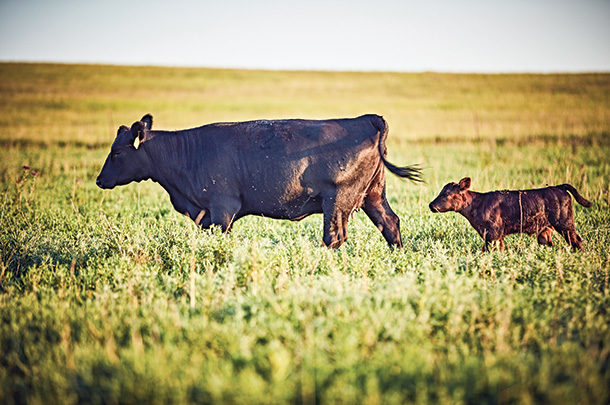As scientists continue to look for new parasiticides, the cattle industry must look for ways to preserve the efficacy of current and future deworming products on the market. One solution is using two dewormers from different drug classes. This practice is known as combination treatment and has been proven to reduce fecal egg counts in cattle herds by nearly 99%. When high efficacy like this is achieved, there are also fewer resistant parasite survivors to cause trouble down the road.
How does combination treatment work?
All commercially available dewormers kill parasites. Where they differ is the spectrum of parasites covered as well as the duration of their ability to kill parasites.
Commonly used cattle dewormers can be divided into two classes, depending on their chemical structure. Successful combination treatment incorporates two dewormers from different classes with different modes of action:
1. Macrocyclic lactones (endectocides) come in both injectable and pour-on formulations. The active ingredients within these dewormers cause nerve paralysis of both internal and external parasites. Macrocyclic lactones provide longer-duration control of parasites compared to benzimidazoles.
2. Benzimidazoles (white dewormers) are administered orally and act as a purge dewormer to internal parasites. These dewormers interfere with the microtubules of parasites, which depletes their energy supply and eventually causes death of the parasite. Benzimidazole dewormers are usually in and out of the system within a couple of days.
It’s important to remember that there are multiple active ingredients within each class, all of which use the same mode of action to eliminate parasites (see Figure 1).

If you’re looking to boost cattle performance and productivity, combination treatment can be a great option. By administering a parasiticide from both classes at the same time, you maximize efficacy and control more parasites – reducing the risk of developing parasite resistance in your herd. However, this practice is not something to try without a conversation with your veterinarian.
In addition to implementing combination treatment, there are other ways cattle producers can maximize dewormer effectiveness for years to come:
- Product selection. While the active ingredient may be the same, there can be many differences in how a dewormer is manufactured, the quality measures taken and even the other ingredients included. As a result, there can be quite a difference in how some generic products perform. Be sure to choose products backed by extensive research.
- Product application. It’s difficult to know for sure if the deworming product is doing its job if it’s not administered correctly. Be certain the product is stored correctly, the dose you’re administering is accurate for the weight of animal you’re treating, and that your equipment is properly functioning prior to treating animals. A frequent practice is to dose dewormers according to the average weight of the herd. While convenient, this can over or underdose a substantial number of cattle and diminish the effectiveness of the drug. Investing in a scale for your herd will allow for more accurate dosing and reduce product waste.
- Diagnostic testing. Performing routine diagnostic tests such as fecal egg counts and coprocultures can help you assess the effectiveness of your deworming program and determine which species of parasite(s) is infecting the cattle. Your herd veterinarian can advise you on the proper method and assist you with conducting these tests for the most accurate results.
- Refugia. Refugia, where a percentage of the herd is intentionally not dewormed, is recognized as the single-most important factor in delaying the onset of parasite resistance. Leaving a portion of the parasite population in “refuge” from dewormers reduces the drug-resistance selection pressure caused by the dewormer.
- Pasture management. Limit overgrazing, maintain appropriate forage height and rotate pastures, if possible.
- Cattle management. Producers can increase overall herd immunity through routine vaccinations and enhanced nutrition. In addition, implementing biosecurity measures can help prevent the introduction of resistant parasites.
- Veterinarian involvement. When it comes to deworming, correct dosing, choosing the right animals to deworm and parasite monitoring will benefit your cattle herd and the future of the industry. No two herds or operations are the same and neither are their parasite burdens. Your local veterinarian can help evaluate your operation’s needs, and he or she can recommend a deworming program and products based on the findings. Your grazing season, the age and category of your animals, your operation type, and grazing history of the pasture are all considerations to discuss.
References omitted but are available upon request by sending an email to the editor.












